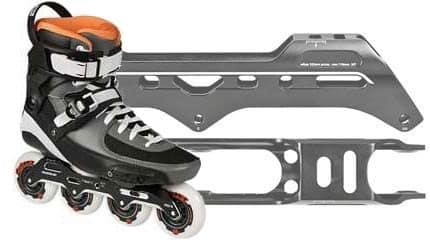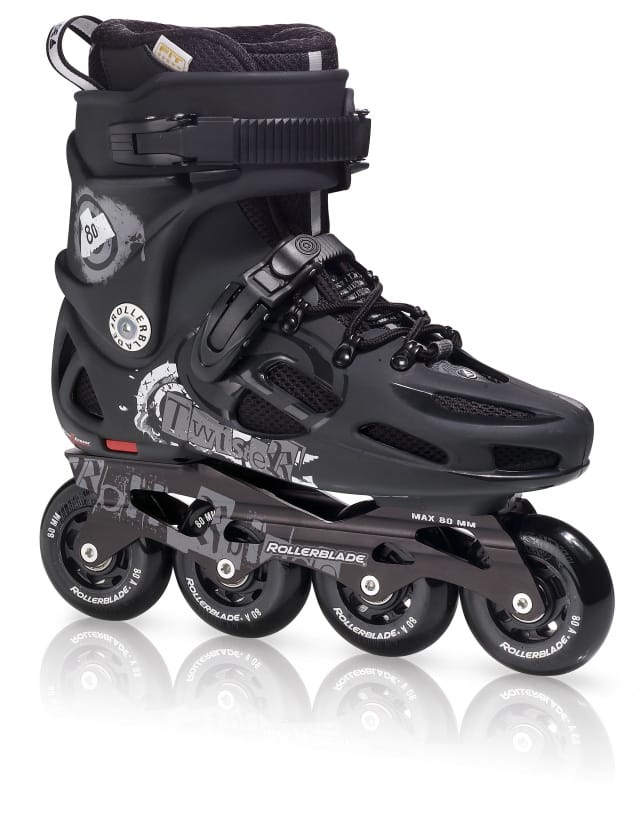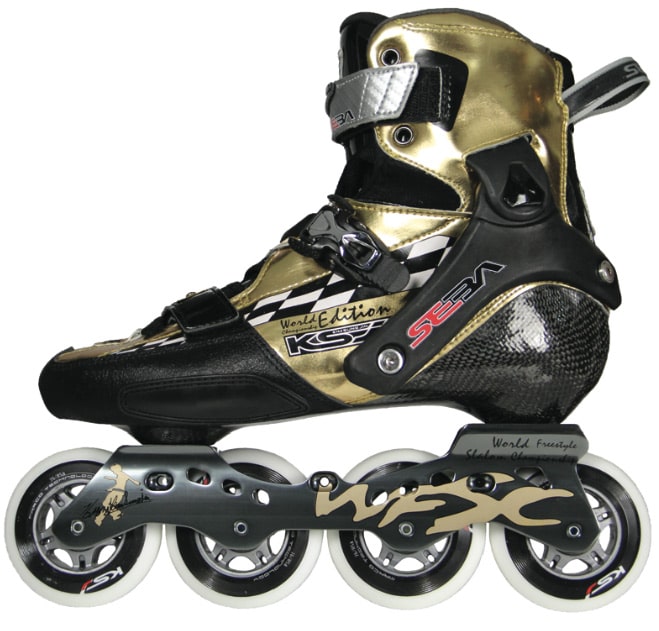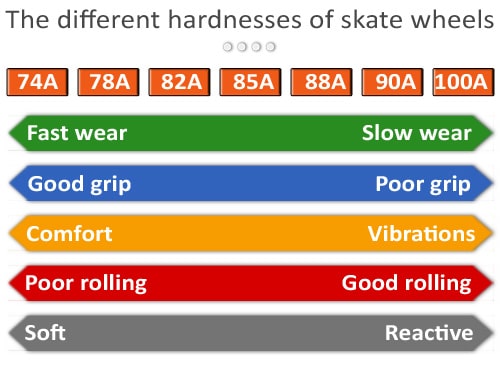Well choosing your slalom skates
Slalom is probably one of the skating disciplines that require the most precision, control and handiness. Then, you should be very careful as for your choice. OLS gives you a few main threads in order to make your decision easier...
Par alfathor

4 reference brands, but also customized skates
 If for several years the Tecnica/Rollerblade Twister was the main choice for skaters willing to practice slalom-skating, the situation is quite different now with the arrival of Seba and Roces and that of new Powerslide models…
If for several years the Tecnica/Rollerblade Twister was the main choice for skaters willing to practice slalom-skating, the situation is quite different now with the arrival of Seba and Roces and that of new Powerslide models…
What are the main characteristics of a good slalom skate?
If you go to the heart of the matter, a slalom skate should:
- be extremely easy to handle
- be reactive
- offer a maximum support
- be very precise
In order to meet the conditions, all the parts of the skate should be taken into consideration: the boot, the frames, the tightening…
What is your frequency of practice?
Contrary to a discipline like fitness or speed skating, the frequency of your practice in slalom does not interfere with the choice of your skates. On the other hand, if your sessions are quite long, you had better choose a comfortable skate.
The essential characteristics of a boot
Still a few years ago, there were very few skates with soft/hard boots in slalom. Most of the models on the market had only rigid boots, like the Twister or the Roces ASP 100. The main reason was that that type of boot offered a better support and more precision than a boot with more fabric (mesh).
For some time now, the arrival of the Seba skates has somewhat changed the situation. Now you can find skates mixing comfort and precision.
One more thing: Having a boot made of composite (carbon or glass fiber) is an advantage: it is both light and rigid. It is the case with the Powerslide Hardcore Evo and the Seba High Carbon, Seba iGoR and Seba KSJ which are made of carbon, as well as the Seba Trixx which is made of glass fiber and carbon.
With or without cuff?
 Most of the time, you will give priority to models with cuffs as they improve the support and the precision. A few skaters, especially Asians like Kim Sung Jin, who are regularly on toe wheelings, have yet opted for skates open in the back like the KSJ, in order not to impeach their moves. However KSJ’s model still has a special cuff: it is a double three-spoke star (one on the outside and one on the inside of the ankle) giving a good lateral support and letting some freedom in the back.
Most of the time, you will give priority to models with cuffs as they improve the support and the precision. A few skaters, especially Asians like Kim Sung Jin, who are regularly on toe wheelings, have yet opted for skates open in the back like the KSJ, in order not to impeach their moves. However KSJ’s model still has a special cuff: it is a double three-spoke star (one on the outside and one on the inside of the ankle) giving a good lateral support and letting some freedom in the back.
Today and since the arrival of the cuff add-on with the Rollerblade Twisters in 2004, almost nobody slaloms without cuff.
The front-back flexing of a skate does not depend on whether it has a cuff but on its design. Some will bend and some will be rigid.
Girls and small-sized skaters appreciate skates with a smoother flexing as it is easier to bend (it is a question of weight and power).
Slalom skating frames
The first thing in slalom is to choose a short frame in order for your skate to be easy to handle. In slalom, you will find frames between 219 and 250 cm. The choice of the frame is made according to the build of the skater. Generally, the smaller you are and the shorter your frame. The taller you are and the « longer » the frame. The other important factor is the size of your foot: the weight bearing areas will not be the same according to the sole of your feet. Roughly, the first axle should be under your toes and the fourth axle under your heel for you to have the optimal mastery on your skate.
You should opt for a rigid model made of aluminum. Forget composite models for the moment as there is nothing actually performant on the market yet.
Too soft a frame will lack precision and reactivity.
Wheels: from 72 to 80 mm
As for the diameter of the wheel, it depends on the discipline, speed or freestyle slalom, on the foot of the skater and on the maximum diameter the frame can take.
You frequently find rockered set-ups in 72-76-76-72 for women. For men, you will mostly find rocketed 76-80-80-76.

Contrarily to popular thinking, freestylers are not looking for the smallest wheels as possible but for the biggest wheels their frames can take. The bigger the wheels, the smoother the moves — and the easier the wheeling tricks (as long as the diameter remains reasonable compared to the size of the skater!)
It is true that the smaller the wheels the lower your center of gravity (then theoretically the more stable you are), but with bigger wheels, you can concentrate more on your balance and your technique. With smaller wheels you have to focus on velocity too: you need to make your wheel spin faster to cover the same distance… and this is a point that may throw you off balance.
Today, you can find mass-produced frames which are already rockered (Seba, Powerslide…): The first and fourth axles are placed slightly higher than the middle axles so that you can have the same diameter on your four wheels and still have a rocketed set-up… which offers you bigger wheels at the toe and the heel than with a « hand-made » rocketed set-up.
NB: Generally in slalom skating, the range of hardnesses is between 78A and 85A, with a preference for 82-85A as it is a good compromise: it does not wear off too fast so that your marks change only slowly (weight bearing, evolution of the rockering), it is comfortable enough and has enough rebound to answer back.
A tip for more handiness: a rockered set-up
You just need to put two bigger wheels in the middle and two small wheels in the ends of the frame in order to improve the handiness: only the two middle wheels touch the ground, bringing a front/back rocking which is perfect for lots of tricks.
Another tip? Heel lifts for sitting tricks

Lots of skaters have a hard time managing sitting tricks like the foot gun. In order to make the learning and the performing easier, you can use a lift! It lifts up the heel and slightly moves the gravity center forward. Then you can sit more easily!
Customized skates, a solution not to be neglected
Skates on the market immediately corresponding to the expectations of expert slalom skaters are rare. Lots of them have opted for customized skates. You choose your boots, your frames, your wheels, your bearings… In order to do so, the best thing is to go to a specialized shop and they will help you customize your skates. Make enquiries on forums too!
Warning: that type of set-up is often more expansive than a mass-produced skate as you buy every part separately.
Recap (The main models on the market)
Useful Links
Test: Powerslide Hardcore Evo 2011
Test : Powerslide Metro 2010
Test : Seba KSJ by Chloe Seyres
Test : Kim Sung Jin Slalom Skates
Rollerskates: where and how to dig up good deals
Buying second-hand skates
Translated by Close Yr E’s
Photos: all rights reserved


